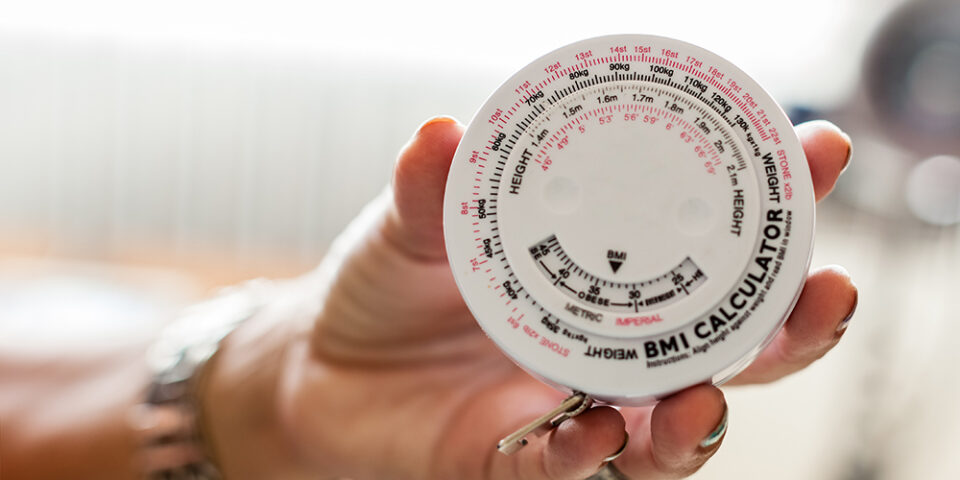Is the BMI accurate?
It’s likely you’ve heard the term ‘BMI’ when reading news articles on health and wellness or even when speaking to your doctor. However, it can be difficult to understand exactly how doctors use the BMI and the way these measurements can impact your health.
Family medicine practitioner Jonathan Ashley, MD, explained the basics of the BMI and whether it really represents an accurate measurement of a healthy weight.
What does BMI stand for? What is the BMI?
“The term BMI refers to ‘body mass index,’” said Dr. Ashley. “It’s a tool doctors use primarily to determine if you’re at a healthy weight and is typically checked at each doctor visit.”
BMI is calculated using your weight and height in the following formula:
- BMI = bodyweight (in kg) ÷ height (in meters) squared.
There are calculators available online to help you calculate your BMI on your own, and you can also ask your doctor during your visit to give you the information, too.
When using these measurements to calculate your weight and its potential impact on health, doctors refer to ranges representing everything from underweight to obese:
- Underweight: Less than 18.5
- Normal: 18.5 to 24.9
- Overweight: 25.0 to 29.9
- Obese: Greater than 30
Why do doctors use the BMI?
“Accurately measuring body fat can be difficult and expensive, so doctors use BMI,” said Dr. Ashley. “The BMI is easy to figure out since you only need to know the weight and height.”
These measurements aren’t considered the be-all and end-all to understanding your personal health. Doctors usually combine them along with other health risk factors, including:
- Blood pressure
- Family history
- Lab test results
- History of tobacco, alcohol or drug use
- Exercise and fitness level
Only when detailed information from several sources is combined do doctors get a more complete picture of your current state of health.
Is the BMI accurate?
“There are many studies that show BMI is an accurate way to determine your health risk,” said Dr. Ashley. “Someone whose calculations result in them being in the overweight or obese category has a higher risk of diseases such as diabetes, high blood pressure, heart disease, liver disease, kidney disease and arthritis.”
Dr. Ashley also noted that people with an elevated BMI have a lower life expectancy and are at an increased risk of death from all causes when compared to those with a normal BMI. The higher the result, the higher the health risk.
It is true that a person with a lot of muscle mass and a low body fat percentage can still have a high BMI, but this is uncommon. Also, there are studies showing even people with a low amount of body fat but high BMI calculation due to muscle still have an increased risk of certain health issues compared with people at a healthy BMI.
Are there alternatives to BMI when evaluating health?
“There are other alternatives to using the BMI,” said Dr. Ashley. “Another measure of health based on body composition is the waist circumference. A waist circumference greater than or equal to 40 inches in males and greater than or equal to 35 inches in females (the cutoff in Asians is greater than or equal to 35 in in males and greater than or equal to 31 in in females) can be a useful tool.”
Body fat stored in the belly is particularly unhealthy, and some people can have a healthy BMI but still have high amount of belly fat. Using waist circumference can give doctors a better look at what percentage of body fat is concentrated in the belly.
Find the care you need, close to home
Our primary care physicians provide well visits and everyday care when you need it with compassion and expertise.
Find Primary Care Near You

